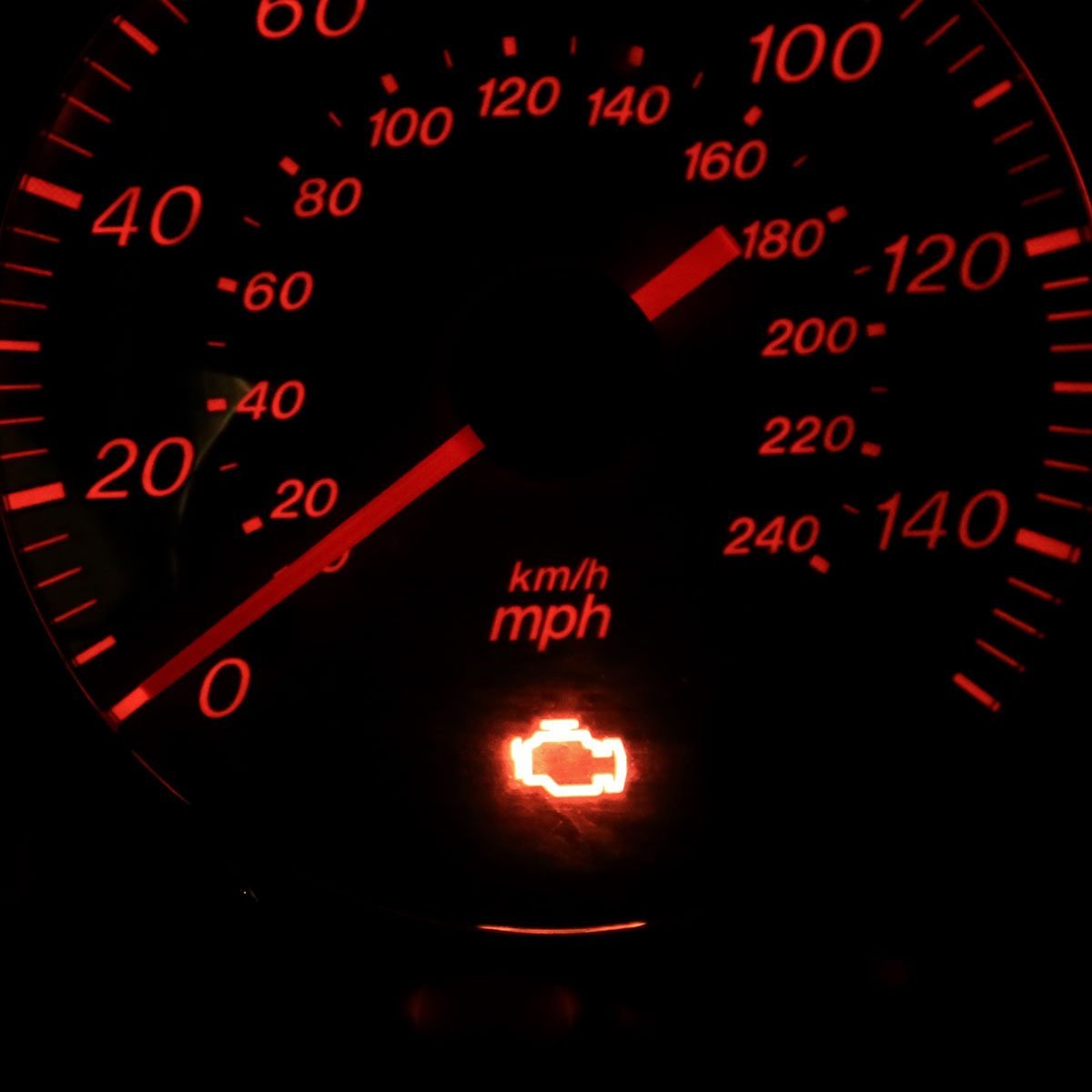When the check engine light comes on, do you start to sweat? Don't be afraid! Here's what every driver needs to know about the check engine light.

Why Is My Check Engine Light On?

The check engine light (CEL) is the most misunderstood warning indicator on the dashboard. When their vehicle’s CEL comes on, many drivers don’t know what to do. Here’s what you need to know: When the CEL is on, it means the Engine Control Unit (ECU) “computer” senses a problem that could or is affecting your vehicles’ emission control system. Too many drivers ignore the CEL hoping it will magically turn off by itself. Not addressing a CEL, even for a relatively minor fix, can lead to costly repairs.
On This Page
What Is the Check Engine Light (and Symbol)?
Although known as the International Check Engine Symbol, the CEL can be a yellow, amber or orange engine-shaped warning indicator on the instrument cluster. It can be labeled “Check Engine,” “Service Engine Soon,” “Check Powertrain,” or simply “Check.” It can also have no label at all or only a label without the engine-shaped warning light.
Why Does the Check Engine Light Turn On?
When the CEL is on, it means an engine sensor (or sensors) is sending abnormal data to the computer. The problem can be a failed or failing mechanical component or one of many sensors — including the sensor sending the suspicious data itself. The computer needs accurate data to control fuel delivery, spark timing and automatic transmission shifting. If there are no noticeable drivability problems, you can drive with the CEL illuminated, but have your vehicle checked out as soon as possible. Besides turning on the CEL, the computer stores a “trouble code” in its memory that helps identify the source of the problem.
Why Is the Check Engine Light Flashing?
A flashing CEL indicates a serious drivetrain problem that could result in irreversible engine, catalytic converter or transmission damage. Stop driving the car. However, it is possible that the computer may allow you to make it to the repair shop or home by engaging “Limp Home Mode” that reduces engine power to protect the drivetrain from further damage caused by missing or out-of-parameter data.
Potential Causes of a Check Engine Light
Here are some of the most common reasons your check engine light is on:
- Loose, damaged or missing gas cap. An integral component of the fuel evaporation system (as well as keeping dirt and debris from getting in the gas tank), gas cap seals wear out. Try retightening, but consider replacing it every seven years.
- Failed or failing O2 sensors. A critical input sensor that effects air/fuel delivery, these sensors fail due to contaminants (bad fuel, raw fuel, oil silicates) that enter the exhaust.
- Spark plugs / Spark plug wires / Ignition coil issues. All can cause engine misfires, which often result in a flashing CEL. Worn, wrong or cracked spark plugs; worn, damaged or shorted spark plug wires; an open, shorted or damaged ignition coil(s) result in incomplete combustion, allowing raw, unburned fuel to exit the combustion chamber. Once in the exhaust system, raw fuel can seriously damage the O2 sensor and catalytic converter.
- Catalytic converter failure. Usually the result of raw fuel, oil or antifreeze entering the exhaust system. A bad catalytic converter can cause the CEL to come on. Plus it can result in drivability issues, including lack of power and acceleration.
- Mass Air Flow (MAF) Sensor. A contaminated or failed MAF cannot accurately measure the amount of air flowing into the combustion engine and will trigger the CEL. This results in various drivability problems, or possibly a no-start condition.
- Aftermarket Accessories (Alarms, Light Kits, Sound Systems). Poorly-installed aftermarket accessories can cause mayhem with sensitive computer systems. They can trigger the CEL by draining the battery, or if wires are spliced into critical emission systems.
How to Reset/Turn Off the Check Engine Light
Sometimes the CEL will simply go off by itself. That does not mean there isn’t a problem. To avoid possible expensive repairs, take your vehicle in for service to have the trouble codes read, or purchase a code reader/scan tool and plug it into the diagnostic port. You can search for trouble codes online to help identify the issue. Once fixed, a scan tool may have the ability to “clear” the code(s), turning off the CEL. Although there are procedures that may clear trouble codes and reset the CEL without a scan tool, this is something best left to the pros.




















